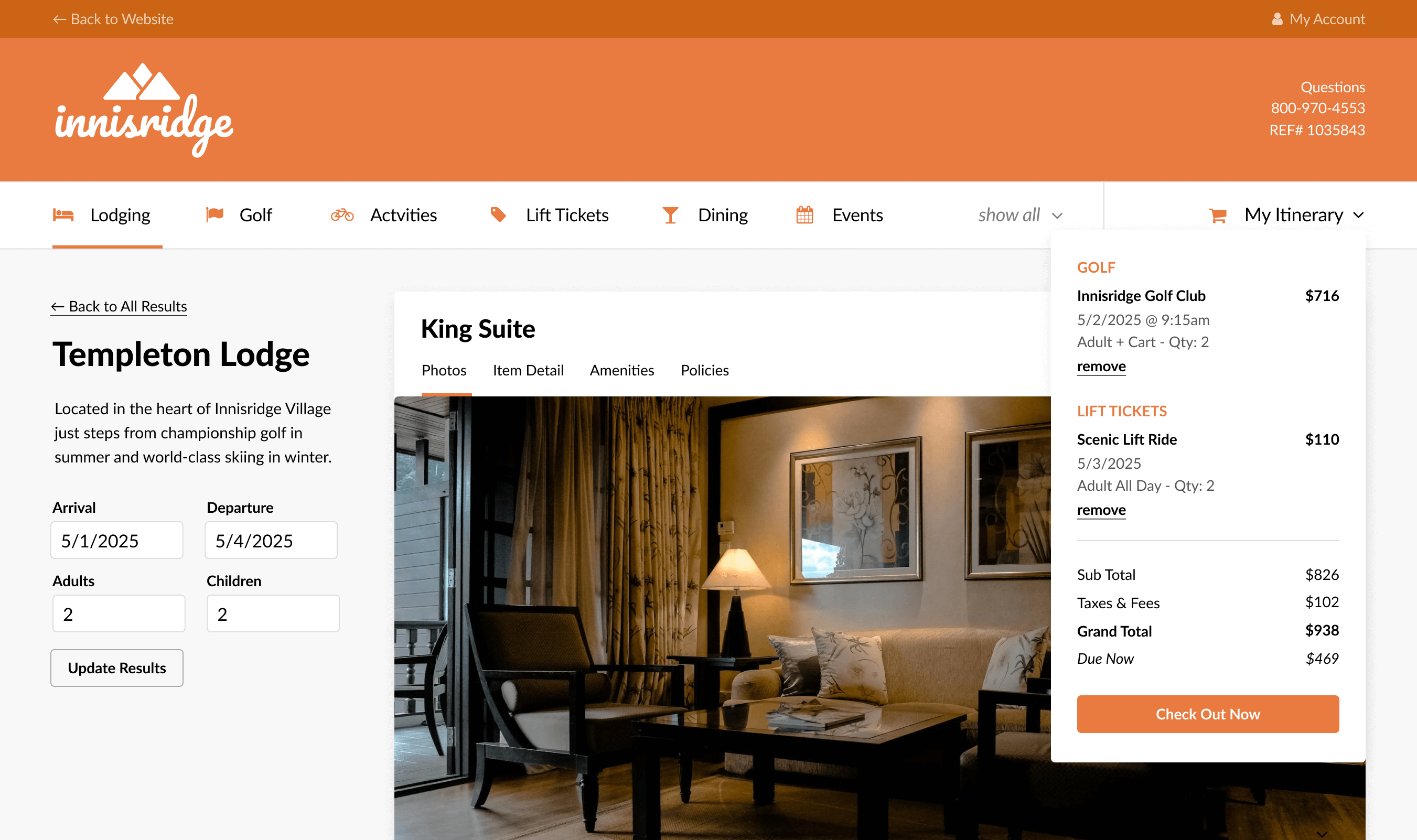
News
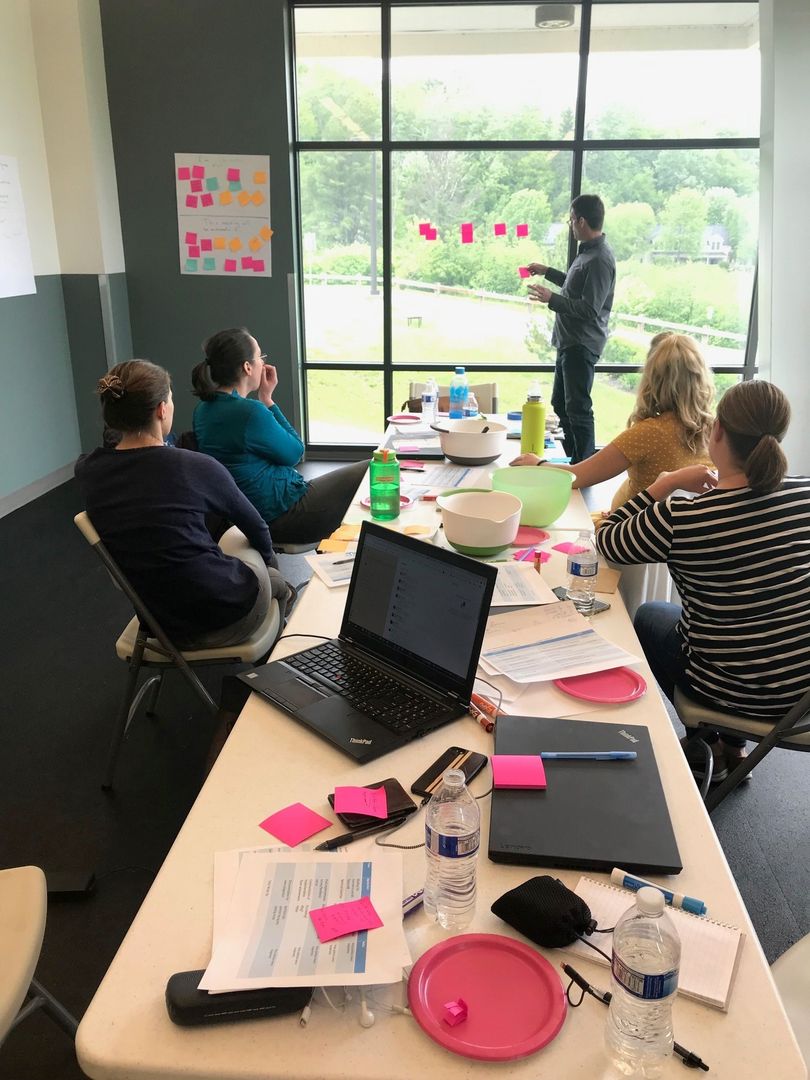
At Inntopia, we build our software and organize our engineering efforts according to the Agile methodology, including the use of scrum masters.
Scrum masters are servant leaders and coaches for an agile team. We help remove impediments and foster an environment for high-performing team dynamics, continuous flow, and relentless improvement. In a lot of ways, our role boils down to helping people understand how to communicate more effectively with each other, and recently I had an opportunity to bring some of that magic to a different part of our organization.
The Inntopia Implementation Team restructured six months ago, with a mix of team members who work in different offices and remotely. This spring, they all got together for a two-day workshop to bring the team together and I was honored to come along as an outsider to facilitate and help them make as much progress as possible.
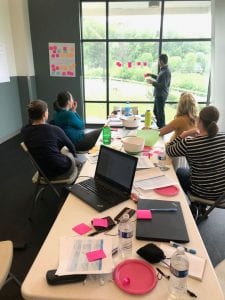
The Implementation Team works hard to get new clients up and running on Inntopia Marketing Cloud, Inntopia Commerce, and Inntopia DestiMetrics. They had some goals going into the meeting, including:
It would have been easy for them to jump right in and start discussing and working on these and their other agenda items. But when you do that, especially with a new group of people, subtle and unspoken differences in how each person on the team sees things can lead to misunderstandings, disagreements, and unproductive digressions from the topics at hand.
Instead, I had them start with an exercise to establish a Mission Statement and Vision Statement for the team. To some, this can seem like a waste of time, but it is an amazing tool. The process of developing and establishing consensus on these ideas gets everyone aligned – truly on the same page – which makes the rest of the workshop and future discussions more enjoyable and more productive.
I opened up the meeting by asking Implementation Team lead John Spencer to give an intro that described what they do and who they are. The rest of the team members were asked to write down key words that he used.
I then guided them through creating a working agreement to set team member expectations for the 2-day meeting. Again, this is something that can seem unnecessary to some, but it proves incredibly helpful to say these things out loud and write them down.
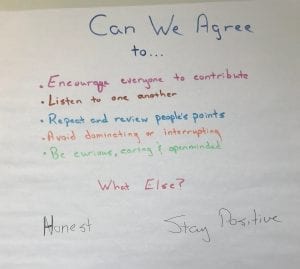
I then asked everyone to fill in the blank on two open-ended sentences:
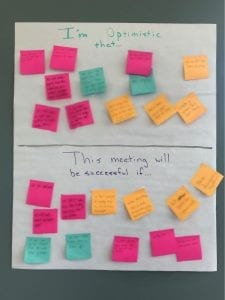
This set the tone for group participation and everyone bringing their best selves to the meeting.
Although the team had regular interactions and felt like they knew each other pretty well, we played a get-to-know-you exercise called Journey Lines. As usual when doing something like this, “I didn’t know you did that!” was the common refrain.
With creative juices flowing and everyone warmed up to participate and communicate, we dove into the Mission and Vision Statements.
I like to think of a Mission Statement as describing where the team is now, and a Vision Statement as describing where they want to go moving forward. I shared a few examples of these kinds of statements and then we started on the Mission Statement. A few tips for helping this process:
Within ten minutes of the groups sharing their Mission Statement drafts, the team had come to a consensus on their final version:
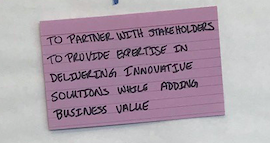
The Vision Statement, however, took a little longer.
After quite a bit of discussion, the groups could not come to a consensus on combining the drafts they’d created. They were stuck approaching it from different angles and couldn’t be pulled out of their mental ruts.
Which leads me to my final tip: when all else fails, break for lunch.
After eating and letting themselves talk about other things for an hour, it took almost no time to agree on a final Vision Statement:
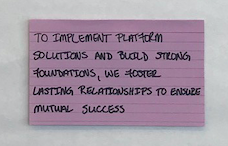
So that was the first half of the first day of the Implementation Team workshop. The remaining day and a half was spent tackling the challenges and agenda items outlined above. I stuck around to facilitate and move conversations along when needed, and to provide the occasional outsider’s perspective that can be so useful to get your thinking outside the box. The team worked really well together, and it seemed clear that the work we did that morning paid off.
As a scrum master, I spend a lot of time thinking about how to help people communicate. Usually that involves technical requirements and project management, but some of my favorite techniques apply to any teamwork scenario:
A big thanks to Ashley, Kyle, Marina, Patty and John for their enthusiasm, participation and making the workshop fun.